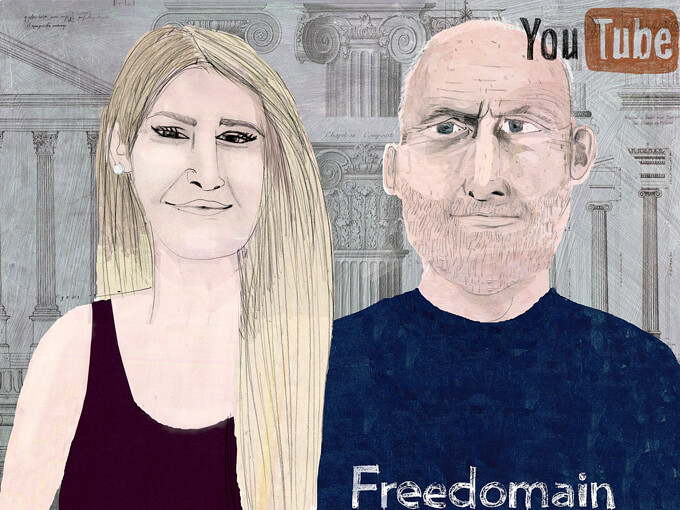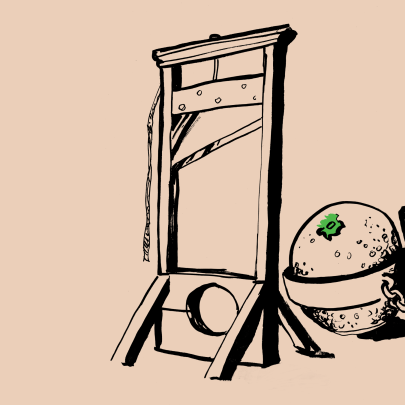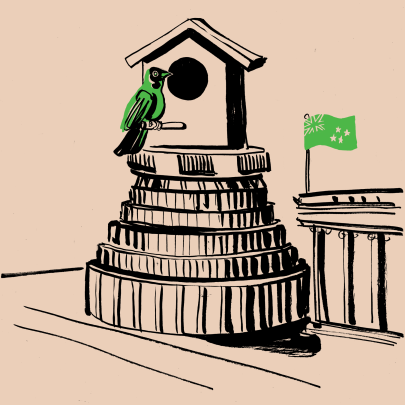Sep 21, 2018 Politics
In August, two far-right provocateurs brought the free-speech circus to Auckland. Metro investigates how a handful of extremists and “public intellectuals” are making money from manufactured moral outrage, and how the arrival of the Canadian pair in New Zealand galvanised a growing activist movement.
The night before — Friday, August 3 — Stefan Molyneux and Lauren Southern’s Auckland event had been cancelled at the last minute. Most of the men’s signs riffed on the far right’s side of the “free speech” argument. There were pictures of the British far-right agitator Tommy Robinson with his mouth taped over, accompanied by the global catch-cry “Free Tommy”. (Robinson had actually been freed from a contempt-of-court sentence a couple of days earlier, but let’s not quibble over such details.) And there were posters in support of Southern and Molyneux. There’d been rumours Southern might show up. For the second time in 24 hours, she left her fans disappointed.
The sound-system belonged to the “Love Aotearoa, Hate Racism” campaign, which had joined the “Rally Against Racism”, organised by Tamaki Anti-Fascist Action (TAFA), the night before in Aotea Square. The Saturday counter-protest against the “Free Tommy” crew had the vibe of an after-party — 60 or so people still going from Friday night, cranking the stereo up, not ready to go home yet.
Two young women wearing headscarves and flying Palestine flags danced to a Public Enemy track under a Free Tommy sign. There was Led Zeppelin’s “Whole Lotta Love”; Herbs’ “Sensitive to a Smile”; Bob Marley’s “Get Up, Stand Up”; Whitney Houston’s “The Greatest Love of All”; Band Aid’s “We Are the World”; bhangra music, which a young Maori woman with a temporary moko kauae blew along to on a conch shell; and a rousing “YMCA” that all the counter-protesters joined in with, actions and all. Even the Free Tommy guys grinned at that.
They weren’t skinheads; mostly, they looked like slightly confused dads. I thought back to 2005, when I was living in London, and the Fathers 4 Justice movement, which briefly captured the public imagination when one of its members scaled the Houses of Parliament to protest against their perceived lack of custodial access to children.
I wondered whether any of these blokes would be game enough to do the same to the clock tower. They weren’t, and instead, drowned out and outnumbered, they were hemmed in by an afternoon dance party. Heated exchanges broke out, mostly as isolated arguments between individuals. In the end, their own white van pulled up, they packed their signs into it, and most of them drifted away — to Freddie Mercury belting out “We Are the Champions” as the counter-protesters claimed the space beneath the clock.
The Friday Rally Against Racism had brought about 500 Aucklanders together, and the Saturday events mustered maybe 100 in total. These were small gatherings, sure. But they were also the tail-end of a much larger clusterfuck that briefly held Auckland on the edge of a potentially dangerous moment.
It started with the announcement that Canadian far-right speakers Molyneux and Southern were planning to speak at the council-owned Bruce Mason Centre. Auckland Live — a division of the council’s Regional Facilities Auckland — cancelled it on public safety grounds. Then, after Auckland Live’s decision, Mayor Phil Goff decided to tweet that council-owned venues wouldn’t be used to stir up ethnic and religious tensions.
Many lauded Goff for his stance. But by framing Molyneux and Southern’s exclusion from council-owned venues on moral grounds rather than public safety, he lit a match. And the hastily assembled Free Speech Coalition that included former National and Act Party leader Don Brash, former Act MP Stephen Franks, left-inclined commentator Chris Trotter, historian and author Paul Moon, former Labour Cabinet minister Michael Bassett and Taxpayers’ Union founder Jordan Williams, among others — brought along the petrol. Both sides were as naive as each other, failing to understand the ways in which the concept of free speech is being weaponised by conservative and far-right groups online, and by the financial interests that drive them.
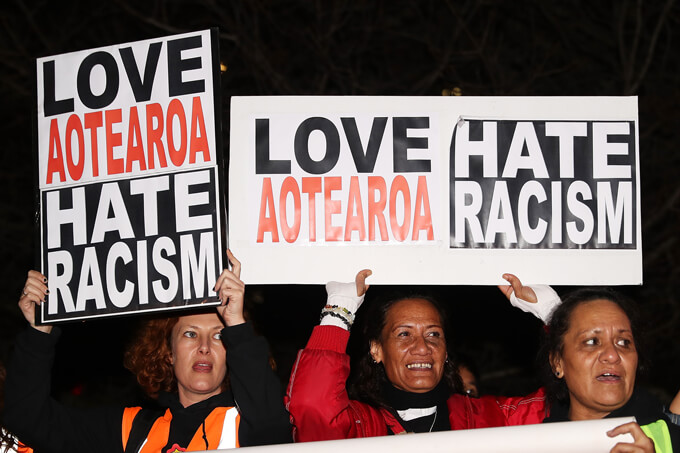
The right’s current favourite straw man is the concept of free speech. Political correctness and identity politics shut down open debate, they claim. Conservative academics are being silenced on university campuses. (That Niall Ferguson, one of the loudest and most successfully published academics in the world, is pushing this idea is remarkable and hilarious.) And most importantly in terms of the impact on public and political discourse, the mainstream media are shutting out conservative voices and opinions.
Cenk Uygur is head of the left-leaning American online news platform The Young Turks. “I’m an enormous believer in the internet,” he tells me. “I believe in its openness, its freedom and its lack of gatekeepers.” Although he finds much to be offended by in the conservative and far-right media he shares the internet with, and finds their hijacking of the free-speech debate ridiculous, he supports their right to say what they want on their platforms.
“Trying to reimpose gatekeepers on the internet is perilous,” he continues. “And, by the way, it comes with an agenda. It’s not just people who are genuinely concerned about fake news and conspiracy theories. Those people exist; they’re real. But it’s also driven by people with an agenda to fight back against independent media on the internet because it’s destroying their business model, and that is traditional media. So they overhype the fake-news angle — it’s real, but it’s overhyped — partly driven by that economic agenda.”
He’s talking, of course, about advertising. When it comes to news, the true revolution of Facebook, YouTube and Google isn’t the spread of fake stuff. It’s their ad models — all those banners you’re invited to click but mostly ignore, which have simultaneously decimated traditional print media’s income-raising capacity and provided a steady income stream to voices previously marginalised or filtered through editorial control.
The conservative right has been exceptionally good at using the internet to find its global readership, whip it into a free-speech frenzy and make serious money from the fallout: Infowars, Breitbart and The Daily Wire are just a few of the obvious examples. Many also utilise “sponsored content”, advertorials that can easily be mistaken for “news” in search engines; or are backed by sponsors who pay outfits like Infowars millions for access to their ever-growing base.
The way we consume news has shifted from something communal and relatively fixed — we sit down to read the same newspaper that hits the newsstands or our front steps at a fixed time, each day — to something solitary. We might read and share some of the same stories, but the way we get to them is unique, as a consequence of how we’ve put together our Twitter streams and Facebook pages. And we read it how, and when, we want, usually alone and in front of a screen.
Then there are the hyper-specificities of search: read something outrageous on Breitbart about Islamic State, say, then hit Google up for more by tapping in the keywords “Isis feminism Obama conspiracy”, and down and down the rabbit hole you tumble.
In searching for news online we look for the fragments that affirm our tastes and values and prejudices. Yes, fake news is part of the picture, but confirmation bias — seeking the information that confirms our biases while ignoring contradictory evidence — is the larger issue. This is what’s causing a decline in critical thinking. And it’s what makes the new mediascape such a dangerous place — where extreme ideas go viral, and earn their promulgators serious money along the way.
Southern and Molyneux are part of this: deliberately incendiary shock-jocks who pump out dangerous inaccuracies about indigenous people, ethnic minorities, race science and “white genocide” in the service of a hateful, race-based populism — and their bank balances. But the issue isn’t that they’re saying it. The issue is that they’re finding an audience at all.
“Wages have flatlined for 40 to 50 years,” Uygur says. “So there are a lot of frustrated people [in America]. Instead of telling them, hey, it’s actually the people up the top with all the power who rigged the system to their benefit and against you, what they say instead is ‘don’t look up! Look down! It was women who took your jobs, it was the Latinos, it was immigrants, it was black people who have an unfair advantage and get government handouts.’”
Uygur is describing the fact that the online audience for the far right is overwhelmingly young white men, who are being programmed through one of the most toxic aspects of online life right now: “The Red Pill.”
If you’ve seen The Matrix, you know the reference: Morpheus (Laurence Fishburne) offers Neo (Keanu Reeves) the choice of two pills. The blue one will return him to his oblivious life as a cog in the giant simulation designed by Earth’s machine overlords. But the red pill — well, then Neo will see the true nature of the Matrix and get flushed out of that gloopy energy-pod thing that’s turned him into a human battery. “Remember,” Morpheus says as Neo reaches for the red pill, “all I’m offering is the truth, nothing else.” Liberation!
The Red Pill has become subcultural internet shorthand for revelations of structural truths, and its most successful peddlers are those who claim to expose the cultural, political and economic forces that keep us pacified. The startling thing is that, having red-pilled, what white men apparently discover isn’t that the technological and capitalist forces of the past 40 years that have outsourced labour, suppressed wages, destroyed workers’ protections and corrupted democratic processes in favour of corporate interests might have something to do with their predicament.
Apparently, it’s the opposite: their loss of autonomy and power is because of the stranglehold of identity politics and political correctness — feminism, migrants, affirmative action, Black Lives Matter, LGBTQ+, antifa (antifascists), and the right’s favourite bogeyman since 9/11, Islam. Their legitimate frustration with the economic system, Uygur argues, is being “redirected towards racism, bigotry and misogyny”.
The Red Pill, then, far from being a mind-clarifying stimulant, is a bigotry- enhancing hallucinogen with a distinctly far-right comedown: Molyneux and Southern, Milo Yiannopoulos and Steve Bannon, and even further right still (yes, that’s possible) into Nick Land’s Dark Enlightenment and the outright fascism of Aleksandr Dugin.
It is dangerous shit. It is not, though, an exclusively far-right phenomenon. Some of the most slippery figures in the current Red Pill mediascape are (allegedly) closer to the centre, and are increasingly framed as mainstream “public intellectuals”.
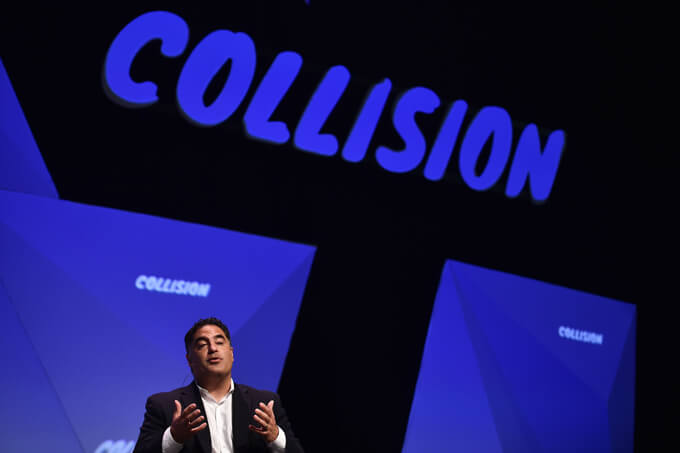
When I arrived just before 7pm, music played as young people painted placards and banners, quietly humming along. There was, though, a faint edge in the air. Valerie Morse of Auckland Peace Action was set to chair the meeting. When I introduced myself to her, she asked if I had ID with me. I did. She apologised for “the paranoia”, but explained that there’d been enough threats and weirdness and misdirection against the group so far to justify it. Morse herself had been threatened with violence by online trolls.
TAFA is a collective of left-wing organisations: Auckland Peace Action, Pride Against Prisons Aotearoa, the Indian Workers Association, Christian organisations, anarchists, socialists, student groups and others. They had been united by the fact that two ostensibly racist speakers had rolled into town. But, it seemed to me, there was something else significant about their gathering. This was a galvanising moment for groups who, separately, represent different, often poor or marginalised minorities within the city: LGBTQ+, Maori, Pasifika, migrant workers, Asian and Indian communities, Muslims, manual workers. Statistics show that eventually some of these minority groups will together form the majority in Auckland.
And that was precisely the anxiety and animus Molyneux and Southern were here to try to stir up amongst whites. This was a battle line between reactionary values — trying to keep power structures as they have been — and progressive inevitabilities: this is how things will be.
The meeting was largely about the cat-and-mouse logistics of co-ordinating two events — first the rally, then the protest at the talk — when the venue for the talk wasn’t yet known. TAFA had three buses booked to ferry people from the rally to the protest. There’d been a suggestion that it would be held somewhere on the North Shore. Another tip-off had come through Facebook: someone claiming that a reliable police source had told them it was going to be at a Parnell hotel. When they looked into it, though, this particular Deep Throat had only one Facebook friend.
Among the general messages, attendees were told to make sure their phones were charged to film any confrontations for evidence. One person was going to live-tweet the rally; another would broadcast it on Facebook Live. Then there were their people on the inside: should they live-tweet the talk, as an Australian SBS reporter had during the pair’s Sydney event? No, it was decided, because people in the room might be able to identify and locate the tweeter.
If it all sounds a bit paranoid in retrospect, it also points to the weird, rhizomatic quality of digital-era protesting by groups adept at using technology to amplify their voices.
Uygur had told me that the far right seeks to “yell at people, intimidate people, bully people, threaten people. That’s why they make up what appears to be a disproportionate share of the comments and the noise on the internet. But in terms of the polling, the younger generation is massively progressive.”
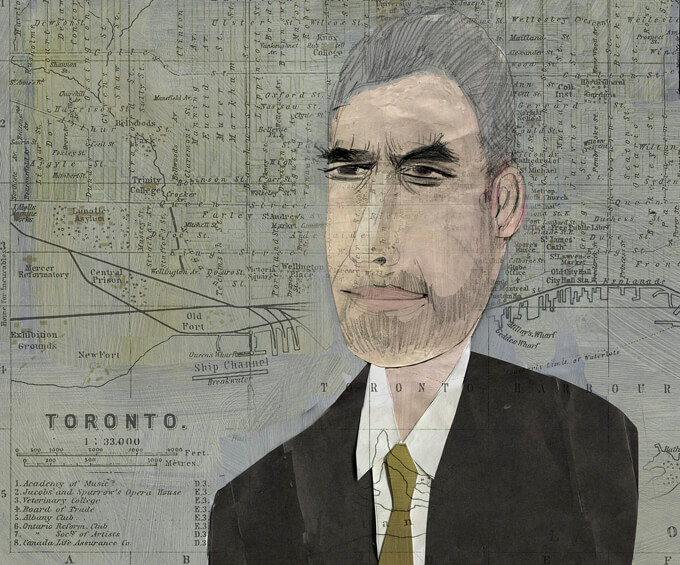
I spoke to him earlier this year after I’d seen that he had an Auckland event scheduled — a $500-a-ticket “Day of Reckoning”. Peterson wasn’t coming but Harris was the main act, alongside other figures associated with the “Intellectual Dark Web”, including Douglas Murray, the neoconservative author of The Strange Death of Europe: Immigration, Identity, Islam. Like the Molyneux/Southern event, it was cancelled; Pangburn’s team didn’t respond when I contacted them later to ask why. (At the time of publication, Murray was still set to debate with the African-American academic Cornel West in Auckland on August 17.)
Pangburn has, though, had some successes with his events. Conversations between Harris and Peterson, chaired by Murray, in July attracted 8,500 to Dublin’s 3Arena, and about 8000 people to a London show in the O2 Arena.
This public interest, Pangburn thinks, is partly down to the Peterson effect. “I think Jordan is helping to make it popular to think,” he says, “and not just for the centre left, or the centrists, or the intellectual types. It’s becoming popular to think for the blue-collar worker, the alt-right, the far-right-wing thinkers. It’s becoming popular to want to justify your position, as opposed to just believing something because someone told you to.”
My own view when it comes to Peterson — who is slated to speak in Auckland in February 2019 — is the opposite: if each generation gets the public intellectuals it deserves and Peterson is it, then man, are we in trouble.
Peterson is the bestselling author of 12 Rules for Life: An Antidote to Chaos — essentially a self-help book, offering everything from parenting tips (“Rule 11: Do Not Bother Children When They Are Skateboarding”) to explanations for why disaffected young American men become school shooters. It’s a surreal blast from the past: a book that sees the world through anachronistic archetypes and posits a natural state of things in which order is masculine, chaos is feminine, and standing up with your shoulders back will make all the difference to whether you’re one of life’s losers or winners.
But there are two indisputable facts about Peterson. The first is he’s everywhere on the internet. The second is that he has galvanised left-wing thinkers like no other conservative in years, precisely because the glaring simplicity of his thinking, and its runaway success, poses an existential threat to progressive intellectualism. Pankaj Mishra in the New York Review of Books wrote that Peterson is “a disturbing symptom of the malaise to which he promises a cure” who “confirms his membership of this far-right sect by never identifying the evils caused by belief in profit, or Mammon: slavery, genocide, and imperialism”. (Peterson subsequently, and very visibly, lost his shit on social media about Mishra’s essay.)
William Davies, writing for the London Review of Books, has said of Peterson that “[h]is eagerness to call out ‘postmodernists’, a catch-all for anyone who questions the superiority of dominant Western political and scientific institutions, is perfectly geared towards those in the younger generation who feel alienated from identity politics.” And Kate Manne, writing in the Times Literary Supplement, described Peterson’s book as “a fast-acting, short-term analgesic that will make many of his readers feel better temporarily, while failing to address their underlying problem. On the contrary, the book often fuels the very sense of entitled need which, when it goes unsatisfied, causes such pain and outrage.”
Sam Harris — with whom Pangburn is close — is an altogether more difficult character to pin down in this strange intellectual universe. A neuroscientist by training, his first book, The End of Faith: Religion, Terror, and the Future of Reason, published in 2004, saw him lumped together, in the hyper-politicised post-9/11 world, with the other “New Atheists”, Richard Dawkins, Christopher Hitchens and Daniel Dennett. But his more contemporary breakthrough came in 2014, when he appeared on Bill Maher’s HBO talk show Real Time and had an argument with the actor Ben Affleck, which subsequently went viral.
Their scrap centred on Harris’s defining intellectual sleight of hand: that criticising the doctrine of Islam — one of Harris’s core themes — is not the same as attacking Muslims. Harris has repeatedly and for many years asserted that the Koran itself is central to contemporary manifestations of jihadism: suicide bombers, cartoonist-killers, al-Qaeda and Isis. Affleck was visibly apoplectic, but largely outmanoeuvred.
Harris’s fans took it as one of his finest moments: with a little help from Maher, he had “owned” a Hollywood superstar. “This was a huge teaching opportunity that so many people took advantage of when talking about the difference between going after an ideology and going after people,” Pangburn argues. “There’s a huge difference … And I think this played well for Sam. It was a big moment that put him on a much larger map.”
Uygur has a very different view. In 2014, he debated with Harris about Islam for three hours on The Young Turks (it’s since been viewed over three million times on YouTube). “A lot of [Harris’s audience] is probably atheist,” Uygur says, “which is a growing community, a great, healthy community. And then he, in my opinion, misdirects them towards right-wing ideology. And [in relation to Islam], he directs them towards bigotry, which is greatly harmful because it’s the one rational community in the world being directed towards irrationality.”
The Affleck stoush lifted Harris out from under Dawkins’ New Atheist umbrella and into the top ranks of the Intellectual Dark Web, a loosely affiliated group of thinkers and cultural commentators linked not by a single political outlook but by the idea that they “tell it like it is”; dealers, in other words, of Red Pills, often positioned both as victims of the “Regressive Left” (a term Pangburn uses in our conversation) and the heroes of free speech.
Peterson is among them; so, too, conservative power-couple Ayaan Hirsi Ali and Niall Ferguson, Douglas Murray, Fox News favourite and editor of The Daily Wire Ben Shapiro, and the Weinstein brothers: Bret, whose departure from a small American college over a free-speech dust-up has become a cornerstone for the new right, and Eric, Peter Thiel’s right-hand man at investment firm Thiel Capital.
Pangburn thinks it’s a horrible title for the group. “It’s kind of the antithesis of what I do,” he says. “This isn’t about group-think, it’s very much that ideas and discussions are open to everyone. There is no club; there is no Intellectual Dark Web meeting where I walk into a room and we look at the battlefield of the world and figure out how we can push some kind of ideology onto people.”
Harris, though, revels in his status as the kind of neutral actor in the pack; his public identity is built on the idea that he’s actually a left-leaning progressive. And his absolute belief in Reason (in the Western philosophical sense) and its discursive correlate, “civilised conversation” — the same principles Pangburn structures his public events around — creates the format for his wildly successful podcast Waking Up.
Waking Up has had a diverse list of guests from across the political and scientific spectrum, and the podcasts often run for two hours. This accommodates Harris’s fondness for non sequiturs, waffle, thought experiments and hypotheticals, all delivered with a monotonal somnambulance that makes the name of the podcast seem ironic. I don’t get it, at all. And yet its popularity is clear: he has hundreds of thousands of listeners globally, and raises income from his audience through the website Patreon. Harris currently has almost 9000 paying patrons, and though his Patreon income isn’t exactly known, it’s estimated at between US$20,000 and US$70,000 per podcast.
Harris and Peterson will be near the top of the bill for Pangburn’s most ambitious event to date: “A Day of Reflection” in New York City in November — hosted by the Larry King of the Intellectual Dark Web, Dave Rubin.
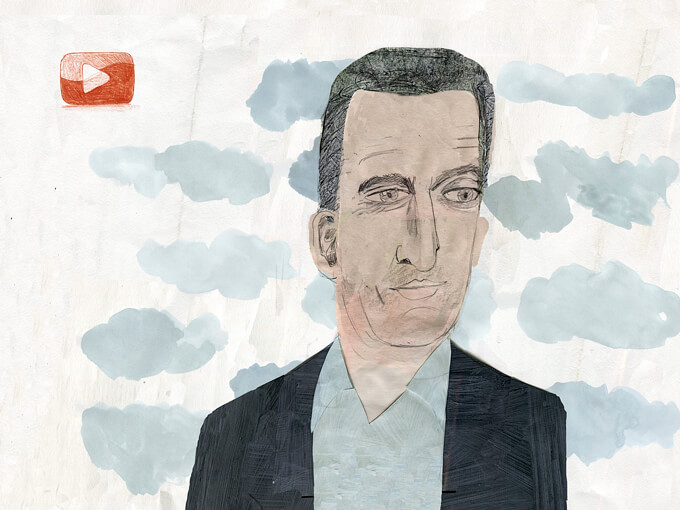
By the time the rally started just after 5.30pm, a few hundred people had gathered, which would swell to about 500 once the Love Aotearoa, Hate Racism crew arrived a little later. Most of us had already found out mid-afternoon that the Molyneux/Southern talk at the Powerstation was cancelled. When it was announced, a huge cheer went up. This, of course, was the result of a campaign that Molyneux and Southern claimed was like “terrorism” and had blocked their right to free speech.
If so, these were the first terrorists I’d ever come across who distributed love-heart balloons. An older woman held a sign that read “I politely disagree with your views”. There were “Workers of the World Unite”, “Alt-Right Delete”, “Use Free Speech Wisely” and “Stop Trying to Make Fascism Happen”. The most militant messages one could find were the catchy rhyme “Catch my Patu, Haere Atu!” and the slightly more direct “Nazi Punks Fuck Off”.
There was also a characteristic shared by many of the speakers that evening: they were brown women. And they were extraordinarily impressive. It started with Marama Davidson, who recounted the threats she and other women had been getting online for their opposition to Molyneux and Southern. “They call us cunts!” she said into the mic. “But cunts are powerful. Vaginas brought you all here!” This was carried on by TAFA’s Sina Brown-Davis, who spoke of her joy that the “Ken and Barbie fascists” had been run out of town by a rally based on multiculturalism and love. She talked about how speakers like Molyneux and Southern encourage white people to look down at minorities rather than up at the powerful (the same point Uygur had made). Annette Sykes took the microphone to rapturous applause and called out the Labour Party, put in government by the return of the Maori seats, for letting Molyneux and Southern into the country in the first place, and for not showing up on the night (she wasn’t the only speaker to make this point).
Once the Love Aotearoa, Hate Racism campaigners arrived, they were given the platform and the theme continued — strong women speaking forcefully about the intersection between racism and class politics: SkyCity workers’ representative Tina Barnett; a brilliant speech from Anu Kaloti of the Migrant Workers Association about how capitalism causes racism; nurse Danni Wilkinson, who said that migrant nurses were the only thing stopping the health system from being even more shit than it is.
There were rainbow and tino rangatiratanga flags and cries of Ake, Ake, Ake. And almost all of it was led by women representing minorities, tangata whenua and the working class. So, yes, it may have been small, but I left it in no doubt that it also represented a new mood of activism in Auckland, a new mood for collective organisation, and a perfect expression of the free speech the Free Speech Coalition had claimed they wanted to uphold.
And, far from being naive or “playing into the alt-right’s hands”, every speaker had their eyes wide open about what was going on. Yes, this was about racism. But they also knew the Molyneux/Southern circus was about money, and power, and where the interests of both intersect.
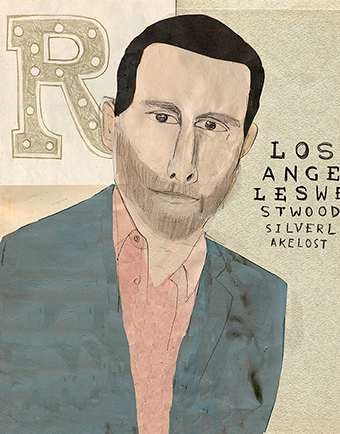
It’s a preposterously obvious setting for Rubin’s personal mythology. Rubin pitches himself as an ex-lefty (he actually got his break with The Young Turks) who’s seen the light, saying that the inherent fascism of identity politics and the “Regressive Left” brought the soothing warmth of “classical liberalism” (read, contemporary libertarianism) into his frozen socialist heart.
Rubin regularly thanks his audience for funding his show through PayPal and Patreon. The Patreon donations add up to around $30,000 a month. The PayPal contributions are unknown. Then there’s the YouTube income, which is notoriously difficult to estimate. What is known is that The Rubin Report’s YouTube channel has around 800,000 subscribers, and around 170 million total views of its videos. With about six million views a month, that could easily run into six-figure revenue each year.
Rubin’s critics (including his former colleague Uygur) think his transformation into a “classical liberal” may be a little more self-serving, though. In September 2016, a subsidiary of the Institute for Humane Studies (IHS), called Learn Liberty, announced it was partnering with The Rubin Report. Once a month, Rubin would interview a “classical liberal” to discuss free speech and, almost always, free markets.
The IHS is a libertarian think tank at George Mason University in Virginia that has received substantial funding over the years from the libertarian billionaire, anti-environmentalism agitator and mega-industrialist Charles Koch. The New Yorker journalist Jane Mayer has written that the IHS was originally established with the aim “to cultivate and subsidise a farm team of the next generation’s libertarian scholars”. The IHS’s own website says its vision is that “higher education becomes a place where classical liberal ideas are regularly taught, discussed, challenged, and developed, and where free speech, intellectual diversity, and open inquiry flourish”.
Rubin has also aligned himself with Turning Point USA, a conservative campus-activist organisation with links to libertarian think tanks that has sponsored campus appearances by far-right figures like Milo Yiannopoulos. This year, Rubin was also on the speaker list at the Ayn Rand Institute, alongside Jordan Peterson, for a conference about Rand’s novel The Fountainhead. According to Greenpeace, the Ayn Rand Institute is actively involved in climate-change denial, and received around $190,000 from Koch-connected foundations between 2009 and 2015.
And this is where the contemporary “classical liberal” identification starts to get dangerous: the growing through-line that connects a conventional libertarian belief in free markets to providing platforms for white extremism, under the banners of “individual liberty” and “free speech”.
This is precisely the space Rubin occupies. If he were just a mouthpiece for modern libertarianism, or even for “tell it like it is” Intellectual Dark Web figures like Peterson, Harris and Niall Ferguson, there wouldn’t be much to criticise him for. But sprinkled among his chats are longform interviews with some of the noisiest figures of the far right: Milo Yiannopoulos, Katie Hopkins, Dinesh D’Souza, Tommy (“Free Tommy”) Robinson, Paul Joseph Watson, Mike Cernovich, and, of course, Lauren Southern and Stefan Molyneux.
One take on Molyneux is that he’s a nobody, who should just be ignored. But this has its own risks, because he embodies a new online version of anarcho-capitalism in which economic libertarianism, authoritarianism, white nationalism and a faith in the disruptive potentials of new technologies like cryptocurrencies are being merged into a single world view. And Rubin’s interview with Molyneux in November 2017 gave him all the time and soft-ball questions he needed to express it.
The Southern Poverty Law Center (SPLC), an activist group that monitors hate speech and the extreme-right in America, are scathing of Molyneux. In their “Extremist” file on him, they write that he “intellectualises his bigotry and insularity by appealing to the false authority of scientific racists and eugenicists. He has endeavored to spread this to his followers by interviewing a veritable ‘who’s who’ of the disgraced and discredited race science community, many of whom are directly associated with, apologists for, or funded by, the Pioneer Fund [which has been funding race science and eugenics research since the 1930s]. In all of these videos, Molyneux offers no criticism of the views of the interviewee, which amounts to a tacit endorsement of their bogus race realism.”
The videos they’re talking about are not his interview with Rubin, but rather the vast collection on Molyneux’s own online platform, Freedomain Radio. Which has been accused, regularly over the past 10 years, of being a cult.
One of Molyneux’s most controversial messages is encouraging his audience to consider “deFOO” — to cut themselves off from their “Families of Origin” — as an act of personal responsibility. All adult relationships, he argues, should be voluntary. So if your parents are arseholes, why keep in touch with them? This has resulted in cases of teenagers disappearing, leaving notes asking their parents never to contact them again. Molyneux argues he’s not forcing people to do anything, merely pointing out that they should be able to choose healthy relationships.
Then there’s the money. Like Harris and Rubin, Molyneux insists his operation is funded by his online community. Rather than using Patreon, he fundraises directly through his website, using a tiered scheme of donations. “The more they donate,” the SPLC writes, “the more access they are granted to their guru and his works.” The Stefan Molyneux YouTube Channel has 800,000 subscribers and 250 million views. Each video comes with an invitation to donate to Freedomain Radio.
FreedomainRadio.com also accepts cryptocurrency donations. Its Bitcoin account has received a total of more than 680 Bitcoin over the past five years. Most of these donations are in tiny fractions of the cryptocurrency. The account’s current balance is only around six — roughly US$42,000 worth — of the total Bitcoin received. The account’s records begin in 2013, around the time, the SPLC says, that Molyneux’s views shifted “from the Ayn Rand libertarian right (and from supporting Ron Paul in 2008) to the ethno-nationalist far right, supporting Donald Trump, Geert Wilders, Marine Le Pen and other far-right politicians in their electoral bids throughout 2016 and 2017.”
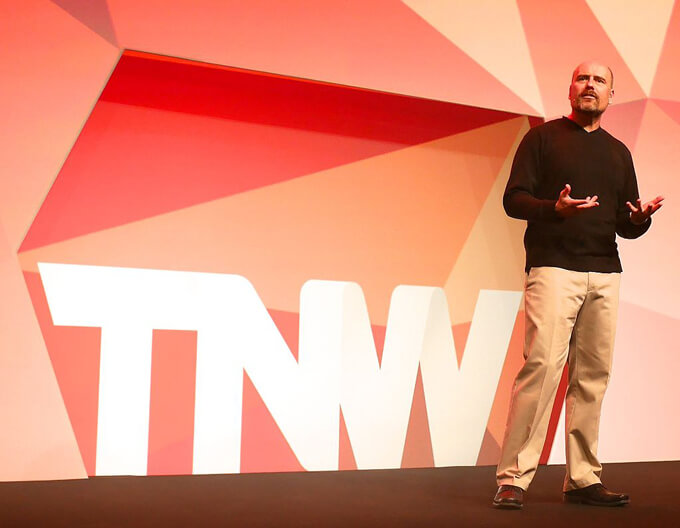
And most of all, the cross-marketing. There’s a reason they all host each other on their podcasts, all follow a “longform” format, and all serve each other up patsy questions so they can ramble at length, unchallenged. And it isn’t because of a faith in the virtues of civilised, reasonable conversation. It’s to leverage each other’s audiences; to find new fans in an age when clicks equal coin. The result, amongst their fan base, isn’t enlightenment but ever-increasing credulity; internet atomisation has become an intellectual Doomsday device.
This is why the possibility some of them are hucksters or con artists doesn’t actually matter, and why having groups that will protest against them when they show up here does.
The strength of that response seems likely to be tested again when former Ukip leader and Brexit champion Nigel Farage speaks at SkyCity in September, and if Australia’s One Nation leader Pauline Hanson accepts a recent invitation to speak here.
The reality is, the trolls are coming out to play, fuelled by a Red Pill fug and their misdirected rage. And history tells us that when the trolls come out, people on both sides tend to get punched in the face, and that the smallest confrontations can lead easily to much larger conflagrations.
As the Love Aotearoa crew took over the space his protest had previously held, he stood on Queen St, his tired kid’s chin nuzzled into his neck: a perfect stillness among the moving bodies and placards and banners. Neither moved, neither cried, neither smiled, until Dad gave his boy a kiss on the head: a father and son utterly in love with each other.
I wondered if that was their day done: the kid was zonked; Dad looked knackered, too. But that turned out to be too much to hope for. As the crowd thinned, I saw him get into a heated discussion with another parent — a young woman with her baby strapped to her front, the faded word “Antifa” just visible on the back of her T-shirt. I eavesdropped for a while, then decided to walk away. Neither of them was going to win. It was time for everyone to go home. Game over.

